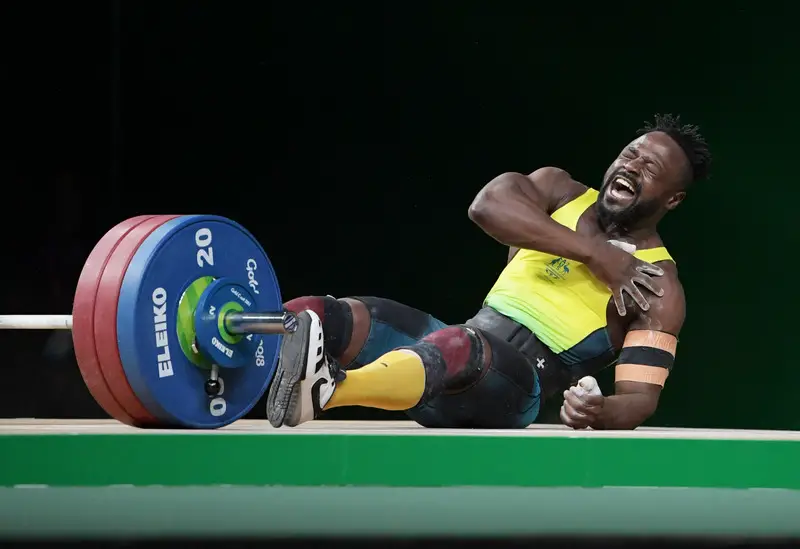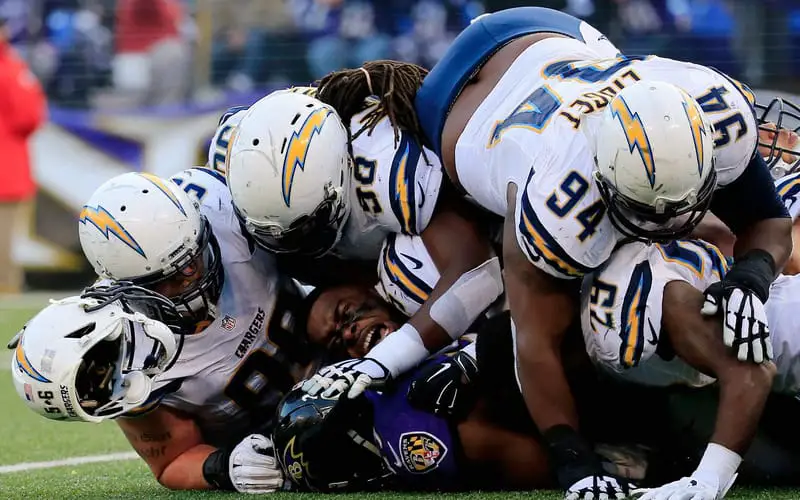Sports have always been a thrilling blend of passion, competition, and entertainment, but many of the world’s most dangerous sports come with extreme risks.
From high-contact games like rugby and American football, to adrenaline-fueled activities such as bull riding, boxing, and mixed martial arts, athletes constantly push their bodies to the limit.
Broken bones, concussions, spinal injuries, and even fatalities are unfortunate realities that remind us how perilous certain sports can be.
While millions of fans celebrate the drama and spectacle, the line between glory and grave injury in these hazardous sports is often thinner than expected.
Here are the Top 10 Most Dangerous Sports in the World ranked:
10. Basketball

According to the Consumer Product Safety Commission (CPSC), basketball ranks among the a sport with significant risks in terms of injury rates.
In 2004 alone, more than 1.6 million basketball-related injuries required medical treatment in the United States. Among the most common injuries, ankle sprains are particularly prevalent, but the risks extend beyond a single body part.
Players frequently suffer injuries to the ankles, hands, knees, and lower back, largely due to the sport’s fast-paced, high-impact movements such as running, sudden stops, sharp turns, and jumping.
The dynamic and physical nature of basketball makes proper preparation crucial. Inadequate training or skipping warm-ups can increase the likelihood of severe injuries, including sprains and strains in the upper and lower extremities.
Low back injuries, in particular, remain a significant concern for both amateur and professional athletes. Interestingly, basketball stands out as the only major sport in which male players experience more injuries than female players, highlighting the unique demands and risks of the game.
9. Cheerleading (competitive)

Competitive cheerleading is widely recognized as one of the most injury-prone sports for female athletes due to its elevated risk of severe and catastrophic injuries, particularly involving the head, neck, and cervical spine.
High-risk stunts such as basket tosses, pyramids, and complex aerial maneuvers expose athletes to dangerous falls from significant heights, dramatically increasing the likelihood of traumatic injuries.
While sprains and strains to the ankles, knees, wrists, and neck are the most frequent injuries, catastrophic cases (though less common) make up a notable share of cheerleading-related trauma.
These include spinal cord injuries, fractures, concussions, paralysis, and even fatalities, underscoring the sport’s inherent dangers.
Injury rates are also influenced by context. They are significantly higher during competitions than in practice, where the intensity and complexity of stunts escalate.
Collegiate cheerleaders face a particularly high risk of concussions due to advanced stunting, while All-Star cheerleaders are more susceptible to fractures and dislocations.
The sport’s physical demands, including weight-bearing lifts, high-impact tumbling, and the pressure to perform in fast-paced, competitive environments, contribute to both acute traumatic injuries and chronic overuse conditions.
For this reason, especially among women’s athletics, cheerleading stands out as one of the most hazardous sports due to its unique combination of gymnastics-level acrobatics and team-based stunting.
8. Rugby Union & Rugby League

Rugby Union and Rugby League are among the most physically demanding sports in the world, due to their high injury rates, intense physical contact, and frequent high-impact collisions.
In elite men’s Rugby Union, the injury incidence rate during matches is approximately 91 per 1,000 player-hours, which is significantly higher than in most team sports.
Match injuries typically cause players to miss an average of 27 days, with tackles accounting for the majority of injuries. Concussions are a major concern, occurring at a rate of approximately 12 per 1,000 player hours, highlighting the risks of head trauma.
Forwards, due to their involvement in more collisions and rucks, tend to experience more severe injuries on average than backs.
Rugby League also exhibits high injury rates, with match injury incidence varying from 54 to 60 injuries per 1,000 player hours for men and women, respectively. Head and face injuries are the most common, with tackling being the leading mechanism.
Although injury incidence is similar across genders, the severity tends to be greater in men, with longer recovery times.
Both Rugby Union and Rugby League players suffer from a high frequency of ligament injuries, concussions, and fractures due to the sport’s demanding physicality and collision nature.
7. Hockey/Ice Hockey

Hockey, whether played on a field or on ice, demands power, speed, and agility. However, it also comes with a high risk of injury.
The type and intensity of hockey influence the kinds of injuries players may face. Concussions are a major concern, often caused by collisions, checks, or accidental hits from sticks and pucks.
Coaches and medical staff need to recognize concussion symptoms quickly to ensure prompt treatment and prevent further harm.
Shoulder injuries are also common, usually resulting from direct contact like shoulder-to-shoulder checks. In ice hockey, skating adds extra risks.
The posture required for skating can lead to low-back injuries, and the repetitive motion can strain the hip joint, increasing the chance of overuse injuries.
To help prevent these injuries, players use protective equipment such as helmets, shoulder pads, and reinforced gear that absorb impacts.
Even with this equipment, hockey remains one of the most dangerous team sports because of its speed and physical contact.
6. Soccer

Soccer (also known as football outside North America) is the world’s most popular sport, played by millions globally. While celebrated for its passion and skill, soccer also carries a relatively high risk of injuries due to its fast pace, constant movement, and frequent physical contact.
One common source of injury occurs when the ball makes direct contact with the body at high speed. A strike to the head can result in concussions or even traumatic brain injury, raising growing concerns in sports medicine.
Heading the ball repeatedly has also been linked to long-term cognitive risks. Physical clashes during attempts to score often lead to injuries from opponents’ elbows, knees, or heads, sometimes severe enough to require hospitalization.
In addition, mistimed tackles can result in players kicking an opponent’s leg instead of the ball, causing painful contusions, sprains, or fractures.
While many injuries are accidental, soccer has also faced criticism for aggressive or intentional fouls, where players deliberately attempt to harm opponents to gain a competitive advantage.
Such incidents not only increase the risk of serious injury but also highlight the sport’s ongoing need for strict officiating and player discipline. Because of these factors soccer is regarded as one of the more dangerous global sports, despite its unmatched popularity.
5. NASCAR and Motocross

Motor racing has been a popular competitive sport since the early 20th century, demanding both mental focus and physical endurance from participants.
Whether in motorcycle racing, motocross, or automobile racing, riders and drivers face significant physical risks due to the high speeds, sharp turns, and extreme maneuvers involved.
During competition, a rider’s body is especially vulnerable. The constant jumps, twists, and high-impact landings place strain on the entire musculoskeletal system.
While some minor injuries can be managed with rest, over-the-counter medication, or physical therapy, many injuries in motor racing are severe and require surgical intervention, often forcing athletes into extended recovery periods.
One of the most common injuries in motorcycle and motocross racing is a broken collarbone, frequently caused by high-speed falls. Damage to the acromioclavicular (AC) joint often necessitates surgery to reduce swelling and restore full function.
Another frequent injury is wrist fractures, typically occurring when riders instinctively extend their hands to brace against impact during a fall. These injuries can significantly impair grip strength and control, which are critical to the sport.
The combination of high velocity, intense physical strain, and minimal protection compared to the forces at play makes motor racing one of the most dangerous sports worldwide. Despite advances in safety gear and track regulations, the risks of fractures, concussions, and severe trauma remain ever-present.
4. MMA

Mixed Martial Arts (MMA) is a full-contact combat sport that combines striking and grappling techniques from boxing, Brazilian jiu-jitsu, wrestling, and Muay Thai.
Its inherent design (two fighters aim to outstrike or submit each other) makes it one of the most dangerous competitive sports in the world.
Compared to other combat sports, MMA carries a heightened risk due to the diverse range of attack techniques, including punches, kicks, elbows, knees, and submission holds. This variety increases the likelihood of brain injuries, concussions, and facial trauma.
Studies have shown that roughly 28% of professional MMA bouts end in a knockout, underscoring the danger of repeated head impacts. To lower risks, proper training and protective equipment are essential.
Fighters are strongly advised to wear mouthguards to protect their teeth and jaw, while coaches emphasize continuous focus during sparring sessions to avoid accidents.
Some professional fighters also practice striking with controlled force in training to limit cumulative damage and lower the risk of long-term brain injury. While fatalities in MMA are relatively rare, the sport has recorded a small number of deaths since its rise in popularity during the 1990s.
Nonetheless, concerns over chronic traumatic encephalopathy (CTE) and long-term neurological damage remain significant, similar to concerns raised in boxing and American football.
Despite its dangers, MMA has grown into one of the most popular combat sports globally, with organizations such as the Ultimate Fighting Championship (UFC) bringing mainstream visibility.
Its combination of diverse martial arts styles and high-stakes competition ensures both widespread appeal and ongoing debate about fighter safety.
3. Weightlifting

Weightlifting is one of the most popular strength sports worldwide, but it also comes with a high risk of injury if not performed correctly.
Research indicates that bodybuilding averages only one injury per 1,000 hours of training, yet competitive weightlifting carries more serious risks.
One of the biggest concerns is the temporary spike in blood pressure during heavy lifts, which can be dangerous for individuals with hypertension and may even lead to internal injuries.
Improper form and poor lifting technique significantly increase the likelihood of joint damage, with joint pain being one of the most common weightlifting-related injuries.
For example, a study in the Journal of Rheumatology revealed that 43% of participants reported reduced knee joint pain after following proper weight-bearing exercise protocols, highlighting the importance of safe training methods.
To prevent injury, athletes must prioritize correct lifting form, use proper equipment, and avoid overexertion. Preventive strategies not only reduce the risk of joint damage but also ensure long-term performance and overall health.
2. American Football

Over the past decade, the popularity of American Football has shown a steady decline.
Recent studies indicate that playing football carries a higher risk of head injuries, including concussions, leading to significant debate surrounding this iconic sport.
An alarming number of players, approximately 3 million, suffered concussions while playing football in the past year alone.
This issue has become a topic of concern for the public as players continually endure sub-concussive blows from head to toe.
Researchers have also highlighted that even a minor head injury can have long-lasting effects on the brain.
Players who experience concussions are at risk of developing a deadly condition known as Chronic Traumatic Encephalopathy (CTE).
Startling statistics reveal that out of 111 football players studied, 110 were found to have CTE, exhibiting suspicious symptoms before their deaths.
In response to these findings, the NFL has implemented rule changes in American football aimed at reducing injuries.
1. Boxing

Boxing is widely recognized as one of the most dangerous sports due to its high risk of traumatic injuries and long-term health consequences.
The sport is inherently combative, with the primary objective being to strike opponents, often targeting vulnerable areas, which increases the likelihood of head trauma, concussions, and brain injuries.
Medical studies have shown that repeated impacts in boxing can lead to severe neurological damage, including an elevated risk of Parkinson’s disease and other neurodegenerative conditions.
Despite strict rules and safety regulations, professional boxers occasionally suffer fatal injuries during matches, highlighting the sport’s inherent dangers.
Concerns over long-term health effects have led organizations such as the British Medical Association (BMA) to call for the sport’s prohibition, citing studies that demonstrate increased susceptibility to chronic neurological illnesses among retired boxers.
Consequently, boxing has been banned or heavily restricted in several countries to protect athletes from permanent injury. The combination of high-impact strikes, repetitive head trauma, and the individual, high-stakes nature of boxing makes it one of the most hazardous sports globally.
Ultimately, the world’s top 10 most dangerous sports highlight the razor-thin balance between human endurance and life-threatening risk.
Whether it’s the bone-crunching tackles of American football and rugby, the brutal intensity of boxing and MMA, or the unforgiving hazards of extreme sports like bull riding, mountaineering, and big-wave surfing, each discipline demands unmatched courage and resilience.
For athletes and enthusiasts alike, these high-risk sports serve as both a testament to physical bravery and a reminder of the constant dangers lurking behind the thrill of competition.
